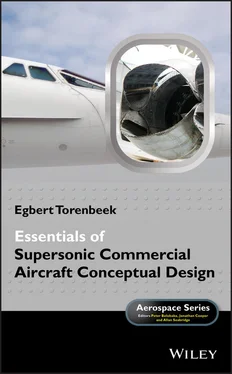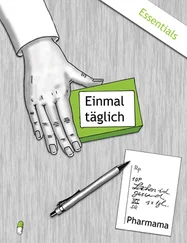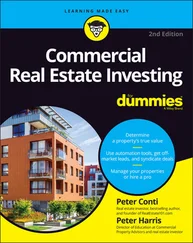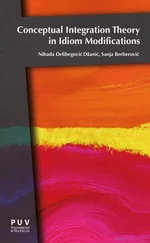1 Cover
2 Table of Contents
3 Begin Reading
1 ii
2 iv
3 v
4 xi
5 xii
6 xiii
7 xv
8 xvi
9 xvii
10 xix
11 1
12 2
13 3
14 4
15 5
16 6
17 7
18 8
19 9
20 10
21 11
22 12
23 13
24 14
25 15
26 16
27 17
28 18
29 19
30 20
31 21
32 22
33 23
34 24
35 25
36 26
37 27
38 28
39 29
40 30
41 31
42 32
43 33
44 34
45 35
46 36
47 37
48 38
49 39
50 40
51 41
52 42
53 43
54 45
55 46
56 47
57 48
58 49
59 50
60 51
61 52
62 53
63 54
64 55
65 56
66 57
67 58
68 59
69 60
70 61
71 62
72 63
73 65
74 66
75 67
76 68
77 69
78 70
79 71
80 72
81 73
82 74
83 75
84 76
85 77
86 78
87 79
88 80
89 81
90 82
91 83
92 84
93 85
94 86
95 87
96 88
97 89
98 90
99 91
100 92
101 93
102 94
103 95
104 96
105 97
106 98
107 99
108 100
109 101
110 102
111 103
112 104
113 105
114 106
115 107
116 108
117 109
118 110
119 111
120 112
121 115
122 116
123 117
124 118
125 119
126 120
127 121
128 122
129 123
130 124
131 125
132 126
133 127
134 128
135 129
136 130
137 131
138 133
139 134
140 135
141 136
142 137
143 138
144 139
145 140
146 141
147 143
148 144
149 145
150 146
151 147
152 148
153 149
154 150
155 151
156 152
157 153
158 154
159 155
160 156
161 157
162 158
163 159
Essentials of Supersonic Commercial Aircraft Conceptual Design
Egbert Torenbeek
Delft University of Technology
Netherlands

This edition first published 2020
© 2020 Egbert Torenbeek. Published 2020 by John Wiley & Sons Ltd.
All rights reserved. No part of this publication may be reproduced, stored in a retrieval system, or transmitted, in any form or by any means, electronic, mechanical, photocopying, recording or otherwise, except as permitted by law. Advice on how to obtain permission to reuse material from this title is available at http://www.wiley.com/go/permissions.
The right of Egbert Torenbeek to be identified as the author of this work has been asserted in accordance with law.
Registered Offices
John Wiley & Sons, Inc., 111 River Street, Hoboken, NJ 07030, USA
John Wiley & Sons Ltd, The Atrium, Southern Gate, Chichester, West Sussex, PO19 8SQ, UK
Editorial Office
The Atrium, Southern Gate, Chichester, West Sussex, PO19 8SQ, UK
For details of our global editorial offices, customer services, and more information about Wiley products visit us at www.wiley.com.
Wiley also publishes its books in a variety of electronic formats and by print‐on‐demand. Some content that appears in standard print versions of this book may not be available in other formats.
Limit of Liability/Disclaimer of Warranty
In view of ongoing research, equipment modifications, changes in governmental regulations, and the constant flow of information relating to the use of experimental reagents, equipment, and devices, the reader is urged to review and evaluate the information provided in the package insert or instructions for each chemical, piece of equipment, reagent, or device for, among other things, any changes in the instructions or indication of usage and for added warnings and precautions. While the publisher and authors have used their best efforts in preparing this work, they make no representations or warranties with respect to the accuracy or completeness of the contents of this work and specifically disclaim all warranties, including without limitation any implied warranties of merchantability or fitness for a particular purpose. No warranty may be created or extended by sales representatives, written sales materials or promotional statements for this work. The fact that an organization, website, or product is referred to in this work as a citation and/or potential source of further information does not mean that the publisher and authors endorse the information or services the organization, website, or product may provide or recommendations it may make. This work is sold with the understanding that the publisher is not engaged in rendering professional services. The advice and strategies contained herein may not be suitable for your situation. You should consult with a specialist where appropriate. Further, readers should be aware that websites listed in this work may have changed or disappeared between when this work was written and when it is read. Neither the publisher nor authors shall be liable for any loss of profit or any other commercial damages, including but not limited to special, incidental, consequential, or other damages.
Library of Congress Cataloging‐in‐Publication Data
Names: Torenbeek, Egbert, author.
Title: Essentials of supersonic commercial aircraft conceptual design /
Egbert Torenbeek, Delft University of Technology, Netherlands.
Description: First edition. | Hoboken, NJ : John Wiley & Sons, Inc., 2020.
| Series: Aerospace series | Includes bibliographical references and
index.
Identifiers: LCCN 2019053571 (print) | LCCN 2019053572 (ebook) | ISBN
9781119667001 (hardback) | ISBN 9781119667032 (adobe pdf) | ISBN
9781119667049 (epub)
Subjects: LCSH: Supersonic transport planes--Design and construction.
Classification: LCC TL685.7 .T67 2020 (print) | LCC TL685.7 (ebook) | DDC
629.133/349--dc23
LC record available at https://lccn.loc.gov/2019053571
LC ebook record available at https://lccn.loc.gov/2019053572
Cover Design: Wiley
Cover Images: Supersonic plane © JimboMcKimbo/Shutterstock, The nose of the concord © Kenneth Summers/Shutterstock
This book is dedicated to my wife Nel Torenbeek-Volker with sincere thanks for her patience and stimulus during more than six years of hard work.
Egbert Torenbeek's book on commercial supersonic aircraft design is timely, exactly 50 years after the first flight of the Concorde in 1969. It performed scheduled flights for 27 years and was able to operate with a profit because the aircraft's attractiveness was able to sustain a high ticket price. As such, the Concorde is the reference aircraft in Torenbeek's book, which starts with a chapter on Concorde's development and service. Torenbeek believes that “a new generation of supersonic passenger aircraft could have a commercial future a decade from now”. From this the author takes his motivation. He writes for a potential engineering team producing a conceptual design for a supersonic airliner. For his wider readership Torenbeek digests the best of the available literature and puts it together in a concise form. He draws his own books and papers on aircraft design and quotes authors that were on the forefront of supersonic aerodynamics: L. Prandtl, J. Ackeret, M.M. Munk, T. Von Kármán, A. Busemann, D. Küchemann, R.T. Jones and J.D. Anderson Jr. Moreover, some knowledge from the ESDU Data Sheets is used. Although many books are available about supersonic aerodynamics and supersonic design, Torenbeek puts all this together and writes about supersonic commercial aircraft design. In Chapter 8about aerodynamic efficiency of supersonic cruise vehicle configurations, the pros and cons of configurations are compared, in particular the aft tail, foreplane and tailles designs. Clearly, the book has an aerodynamic focus as the aircraft cruise speed is supersonic, but the aerodynamic aspects are always discussed from a design perspective. This is especially true for Chapter 3about weight sensitivity and energy efficiency, where Torenbeek starts this item with the first law of aircraft design, which states that the sum of the payload fraction, the empty weight fraction and the fuel fraction is equal to one. This equation also shows that not every design problem will have a solution if technology parameters for lightweight design and/or fuel weight are suitable. In the case of the Concorde, the maximum payload is only 6%, its empty weight fraction is 44%, and the relative fuel mass fraction is 50%. This is not a favorable comparison with the relative 25% for subsonic short‐range passenger aircraft and 10% for subsonic long‐range aircraft.
Читать дальше













